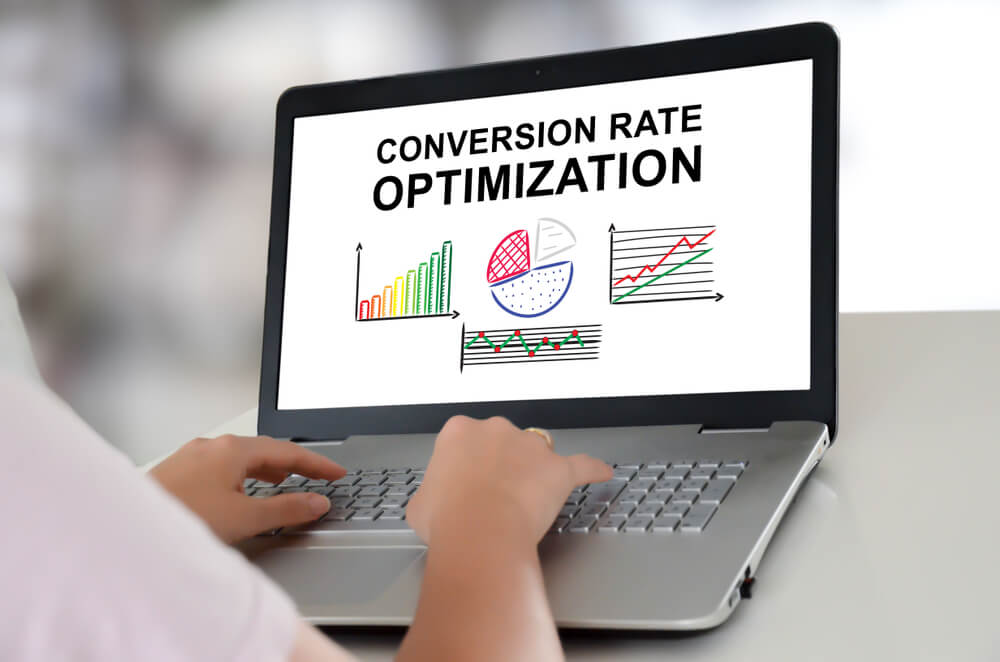
Use Data Analysis To Drive Real Success in PPC Healthcare
Data analysis is essential for PPC campaign optimization. Data-driven approaches help healthcare marketers understand PPC campaign performance metrics and user behavior.
Healthcare data helps medical professionals make informed decisions, refine targeting strategies, optimize ad placements, and allocate budgets to maximize advertising impact.
This guide highlights how data analysis can lead to success, with help from a healthcare PPC agency. It covers the following topics:
- Gathering relevant data.
- Analyzing audience segments.
- Keyword analysis.
- Optimizing ad copy and creatives.
- Landing page conversion analysis.
- Adapting to patient behaviors and trends.
Enhance the precision of your healthcare PPC campaigns.
Tired of spending money on Pay-Per-Click ads and not getting results? This video shows how DAP turns that around!
Gathering Relevant Data for Healthcare PPC

Accurate data helps identify critical demographics, behaviors, and interests, allowing healthcare marketers to tailor their ads to potential patients' needs. It improves campaign efficiency by optimizing keyword selection, ad placement, and budget allocation, resulting in higher conversion rates and a better return on investment (ROI).
Moreover, data-driven insights facilitate refinement and adjustment, ensuring that PPC strategies remain aligned with evolving patient demands and market trends. Consider these three types of data necessary for effective PPC healthcare campaigns:
- Demographic data. Understanding the target audience's demographics is crucial for healthcare PPC. This includes age, gender, location, income level, education, and marital status. Demographic data helps craft ads that resonate with specific groups, making sure that the message is relevant and appealing to the audience.
- Behavioral data. Behavioral data encompasses information about users' online behaviors such as search history, websites visited, content engagement, and device usage. It helps marketers understand user intent and interests. This data enables marketers to create PPC campaigns that align with potential patients' interests.
- Conversion data. Tracking conversion data is essential for evaluating the effectiveness of healthcare PPC campaigns. It includes metrics such as clickthrough rates (CTR), form submissions, appointment bookings, inquiries, and actual patient acquisitions. Analyzing conversion data helps refine strategies, optimize ad performance, and allocate budgets.
These data types collectively provide insights into the audience, their behavior, and the campaign's impact. They allow healthcare marketers to optimize targeting, messaging, and campaigns for better engagement and conversion rates.
Analyzing Audience Segments
Analyzing audience segments enables tailored targeting to specific groups. It allows marketers to understand varying needs, preferences, and behaviors, ensuring that the right message reaches the right individuals at the right time.
Through segmenting audiences based on demographics, conditions, interests, or behaviors, healthcare PPC campaigns can deliver more personalized and relevant content, increasing engagement and conversion. Analyzing audiences also optimizes ad spend by focusing resources on segments that generate the most significant ROI for healthcare.
Here are techniques for segmenting PPC data to understand various audience groups:
- Demographic segmentation. Divide the audience based on demographic characteristics such as age, gender, income, education level, and marital status. This segmentation helps tailor ad messaging and offerings to specific demographic groups likely to engage or convert.
- Geographic segmentation. Segment the audience by location, including countries, regions, cities, or specific neighborhoods. Geographic segmentation helps in local PPC campaigns for healthcare services or products available in particular areas.
- Behavioral segmentation. Analyze user behavior data such as search history, browsing patterns, past ad interactions, or engagement metrics. Segmentation based on behaviors helps identify different intent signals, allowing for the creation of more targeted and relevant ad campaigns.
- Device segmentation. Segment audiences based on the devices they use, including mobile phones, tablets, or desktops. This segmentation helps optimize ad formats and experiences for different devices, ensuring an optimal user experience that enhances conversion rates.
- Remarketing lists. Create segments based on the user's previous interactions with a website or previous ad engagements. By dividing audiences into remarketing lists, healthcare PPC campaigns can retarget users who have already shown interest, encouraging them to revisit or convert.
These segmentation techniques allow healthcare PPC marketers to better understand their audience groups, refine targeting strategies, personalize messaging, and optimize campaigns. They can effectively reach and engage diverse segments of their target market.
Keyword Analysis and Optimization

Keyword analysis and optimization involve evaluating the performance of selected keywords in PPC campaigns and using data-driven insights to make informed decisions. This process includes assessing metrics such as CTR, conversion rates, and cost-per-click (CPC) to determine the effectiveness of specific keywords.
Marketers can optimize PPC bid management, ad copy, and landing pages by identifying high-performing keywords to improve campaign performance. Continuous monitoring and adjustment based on performance data ensure that healthcare PPC strategies align with user intent and evolving market trends, maximizing the ROI.
Consider these top strategies for selecting and bidding on keywords to yield optimal results in healthcare PPC:
- Focus on long-tail keywords that are more specific and have lower competition. Long-tail keywords reflect user intent more accurately, leading to higher conversion rates. For instance, instead of bidding on "doctor," consider phrases like "pediatrician near me open on weekends."
- Leverage keyword research tools, such as Google Keyword Planner, to identify relevant keywords with moderate to high search volumes and lower competition in the healthcare sector. These provide valuable insights into search trends, related keywords, and estimated bid costs, aiding in informed decision-making.
- Prioritize keywords that align with the intent of potential patients. Consider using keywords that indicate an intention to seek healthcare services, such as "best orthopedic surgeon in [location]" or "symptoms of [specific condition]."
- Incorporate negative keywords to refine targeting and avoid irrelevant clicks. Negative keywords filter out search queries that are not relevant to your offerings, thus reducing wasted ad spend and improving the quality of traffic to PPC campaigns.
- Organize keywords into specific ad groups based on relevance and similarity. This allows for more tailored ad copy and landing pages, leading to higher ad relevance and click-through rates. For instance, create separate ad groups for medical specialties or healthcare services to deliver more targeted messaging.
These keyword selection and bidding strategies can attract more qualified leads, improve ad relevance, and ultimately enhance the overall performance and ROI.
Optimizing Ad Copy and Creatives
Optimizing ad copy and creatives in healthcare PPC involves analyzing CTR, conversion rates, and engagement metrics to understand which ad copy and creative elements resonate best with the target audience.
By testing variations in headlines, ad text, images, and calls to action (CTAs), marketers identify high-performing elements to craft more compelling and relevant content. Continuous monitoring and optimization based on performance data ensure that ad copy and creatives remain tailored to user preferences, maximizing the impact and success of campaigns.
A/B testing multiple ad versions is a potent strategy to refine messaging and visuals in healthcare PPC campaigns. Here are the techniques to do it:
- Create ad versions with different headline variations, focusing on diverse angles, benefits, or CTAs relevant to healthcare services or products. For instance, test headlines emphasize convenience, expertise, cost-effectiveness, or unique selling propositions.
- Craft different types of ad copy highlighting distinct aspects of healthcare services such as quality, specialization, patient testimonials, or specific treatment approaches. Testimonials, statistics, or emotional appeals help with understanding which prompts better engagement or conversions.
- Test different CTAs to prompt action, for example, "Book an Appointment," "Learn More," "Call Now," or "Get a Free Consultation." Assessing which drives more clicks or conversions helps refine PPC messaging.
Regularly testing these variations and analyzing performance metrics helps healthcare marketers gain valuable insights into what resonates most with their audience. This iterative process allows for continuous refinement, improving the effectiveness of ad messaging and visuals in PPC campaigns.
Analyzing Landing Page Conversion Performance

Analyzing landing page conversion performance in healthcare PPC involves leveraging data to refine and enhance landing page effectiveness. Marketers examine vital metrics such as conversion rates, bounce rates, time-on-page, and form submissions to understand user behavior and identify areas for improvement.
They use Google Analytics and heatmaps to pinpoint specific user interactions, scroll depth, or click patterns, providing insights into user engagement and potential pain points on the landing page. Finally, they iterate variations in layout, content, forms, and CTAs based on data-driven insights for better conversion rates and a more seamless user experience.
Boost conversion rates in healthcare PPC campaigns by following these techniques:
- Test different variations of your primary CTA buttons or links. Experiment with wording, colors, placement, and size to determine which encourages more conversions.
- A/B test variations in headlines, body content, and value propositions. Highlight different benefits, services, or unique aspects of healthcare offerings to identify what resonates best with the audience.
- Experiment with different images, videos, or graphics on the landing page. Test visuals that showcase healthcare facilities, staff, patient testimonials, or procedures to determine which visuals drive higher engagement and conversions.
- Test different form lengths, formats, and fields required for submission. Reducing the number of fields or using a multi-step form can sometimes improve user engagement and increase conversion rates.
- Make sure that landing pages are optimized for mobile devices. Test variations that specifically cater to different screen sizes, functionalities, and user behaviors on mobile platforms, as a significant portion of users access healthcare information or services through mobile devices.
Adapting to Patient Behaviors and Trends
Continuously monitoring metrics such as search patterns, keyword performance, and user engagement allows healthcare marketers to swiftly identify shifts in patient preferences or emerging trends. It enables quick adjustments in PPC targeting, messaging, and ad placements to align with evolving patient needs
With continuous monitoring, campaigns remain relevant and impactful in the dynamic healthcare industry. This enables healthcare advertisers to seize new opportunities, capitalize on emerging trends, and maintain a competitive edge by delivering timely and tailored content that resonates with changing patient behaviors and preferences.
These techniques adopt healthcare PPC strategies to evolve patient behaviors and trends:
- Ensure regular monitoring and analysis of data metrics using tools such as Google Analytics, social media insights, and PPC platform analytics to stay updated on shifts in patient interests, concerns, and search patterns.
- Keep abreast of healthcare industry developments, advancements, and changes in patient preferences. Stay connected to healthcare forums, publications, and industry reports to understand emerging treatments, health concerns, or patient priorities.
- Maintain flexibility in PPC campaigns to swiftly adapt to changes. Utilize ad scheduling, budget adjustments, and dynamic ad creation to respond promptly to shifts in patient behaviors or market trends.
- Focus on personalized messaging and tailored ad content that resonates with patient needs. Use dynamic keyword insertion, ad extensions, and segmented targeting to deliver specific messages to different patient groups.
Do not forget to consider the safety and security of patient data, primarily when this information is used in paid advertising campaigns. Follow the guidelines set by the Health Insurance Portability and Accessibility Act of 1996 (HIPAA) to guarantee the safe handling, storage, and use of protected health information (PHI).
Using Advanced Analytics Tools

Advanced analytics tools offer in-depth insights into user behavior, enabling marketers to comprehensively understand patient preferences, search patterns, and engagement metrics.
Using advanced analytics allows precise tracking of campaign performance. Healthcare advertisers can measure ROI, identify high-converting keywords, and optimize strategies for better outcomes. These tools identify emerging trends and shifts in patient behaviors so that marketers can swiftly make data-driven decisions and effectively adapt PPC campaigns.
Here is an overview of advanced analytics tools and software that can significantly enhance healthcare PPC campaigns:
1. Google Analytics
Google Analytics offers robust tracking and reporting features, providing insights into user behavior, website traffic, conversions, and more. It automates data collection by tracking user interactions across web pages, allowing healthcare marketers to gather comprehensive data on user journeys.
This PPC analytics tool has advanced features such as goal tracking, audience segmentation, and custom reports to automate analysis, offering valuable insights for optimizing PPC campaigns.
2. Google Data Studio
Google Data Studio integrates with various data sources, allowing customized, interactive dashboards and reports. It automates the visualization of PPC campaign performance by pulling data from multiple sources and presenting comprehensive insights into key metrics.
Marketers can create automated reports using Data Studio and share them with stakeholders, facilitating easy understanding and decision-making based on healthcare PPC data.
3. Optmyzr
Optmyzr is a PPC management platform with advanced optimization and automation tools. It automates various PPC tasks based on predefined rules and algorithms, including bid management, ad testing, and campaign optimization.
Optmyzr's automated features streamline data analysis, allowing quicker decision-making and more efficient healthcare PPC campaign management.
4. Tableau
Tableau is a powerful data visualization tool that allows interactive and detailed data analysis. While not inherently an automation tool, Tableau enables the creation of automated dashboards and visualizations that can incorporate PPC campaign data from various sources.
Its capabilities in visualizing complex data sets help healthcare marketers gain deeper insights into PPC performance, aiding in strategic decision-making.
These advanced analytics tools allow healthcare PPC marketers to more efficiently make data-driven decisions. They offer insights that aid in optimizing campaigns, improving targeting, and enhancing the effectiveness of healthcare PPC efforts.
Summing Up
Data analysis plays a pivotal role in steering successful healthcare PPC campaigns. It offers valuable insights into patient behaviors, preferences, and trends, enabling targeted and personalized ad strategies.
Healthcare marketers can optimize targeting, refine messaging, and allocate resources effectively by leveraging data-driven decisions. These improve campaign performance, patient engagement, and ROI in PPC healthcare.
How can ongoing data analysis revolutionize your approach to audience targeting and engagement? Let an expert PPC healthcare agency help you with your paid ad strategies. Contact Digital Authority Partners (DAP) today.
Want To Meet Our Expert Team?
Book a meeting directly here




